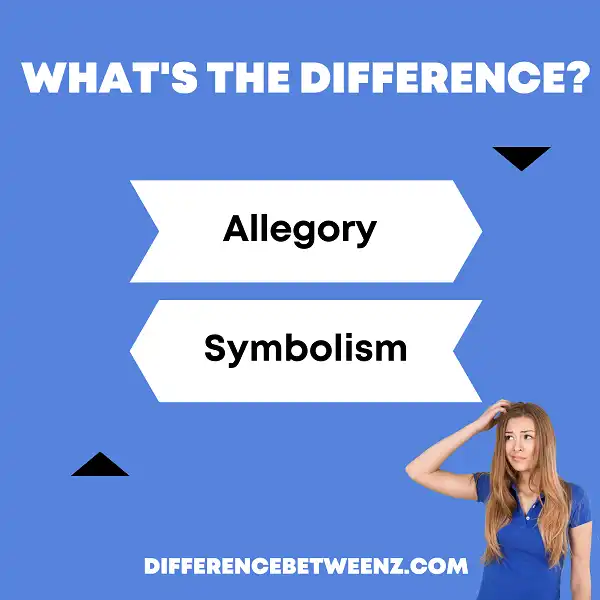Allegory and symbolism are often used by writers to convey deeper meanings in their works. While they may appear similar, understanding the differences between these two storytelling devices is essential for sophisticated writing. In this blog post, we will explain exactly what distinguishes allegory from symbolism and offer some examples of both so that you can better identify them when reading literature or watching movies. By learning to recognize and use these narrative techniques effectively, your own writing will become more powerful as well!
What is Allegory?
Allegory is a type of figurative language in which a writer uses symbols to represent an idea. It is often used when writing fiction and poetry but can be found in other disciplines as well. Allegory can help convey ideas in a succinct way that would otherwise be difficult with literal descriptions. Allegory is intended to teach or enlighten readers, making it a powerful tool of communication.
The phrase “to speak in another way” perfectly captures what Allegory does – imparting meaning through the use of symbolism and metaphor. This type of figurative language allows us to make connections beyond what we can see with our eyes and understand on the surface level, allowing us to find layers upon layers of understanding buried within works of literature.
What is Symbolism?
Symbolism is a form of literary technique that can be used to evoke certain emotions or thoughts in readers. Symbolism means “to throw together”, which implies creating something that has more than one meaning. Symbolism involves the use of certain figures, colors, and other objects to represent something else, either directly or indirectly.
Symbolism can be used to create powerful images and convey ideas beyond what is said directly. Symbolism can add depth to any written work and help bring different elements together in an interesting way. Symbolism is an important tool for authors and poets to utilize as it allows them to portray ideas or feelings through symbolism that would otherwise be difficult or impossible to express in words alone.
Difference between Allegory and Symbolism
Allegory and symbolism are often confused due to their similar appearance and usage in literature.
- Allegory, however, serves as a way for authors to communicate a much deeper meaning, usually found within the moral realm.
- Allegorical stories often have characters representing people, ideas, or events in the physical world.
- A symbol, on the other hand, acts as a representation of something more abstract such as emotions or beliefs.
- In addition to symbols existing within a single object, they can also be spread out in entire scenes or storylines that evoke feelings and make it easier for readers to relate with non-tangible concepts.
It is important to keep in mind the difference between these two dynamic figures of speech if one wants an accurate interpretation of what is being presented in the literature.
Conclusion
There are many different ways to interpret the world around us. When you see a work of art or read a book, it is important to remember that there are often multiple layers of meaning. An author may not tell you what they mean directly – instead, they may use allegory or symbolism to communicate their message. Understanding the difference between these two concepts can help you better appreciate the works you encounter.


